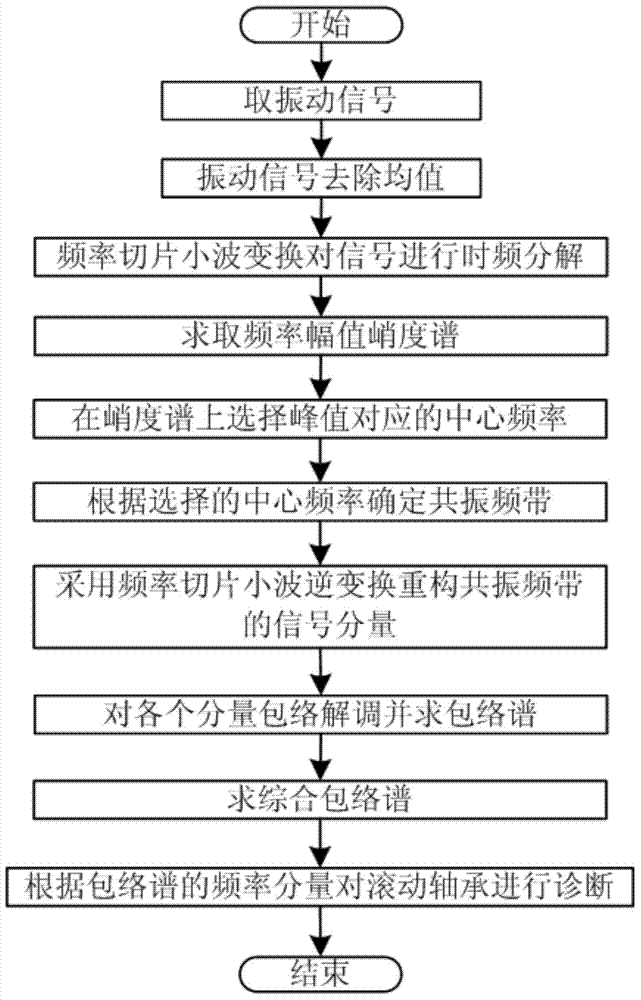Time-frequency slice analysis-based rolling bearing fault diagnosis method
A rolling bearing and time-frequency slicing technology, which is applied in mechanical bearing testing and other directions, can solve problems such as excessive computing time, inability to effectively extract damage characteristic frequencies, and long signal envelope time, and achieve the effect of reducing misjudgment
- Summary
- Abstract
- Description
- Claims
- Application Information
AI Technical Summary
Problems solved by technology
Method used
Image
Examples
specific Embodiment
[0045] 1. Collect the vibration signal of the rolling bearing, and remove the DC component in the vibration signal of the rolling bearing. The vibration signal of the rolling bearing is collected by the acceleration sensor, and the acceleration sensor is installed on the support or bearing seat of the rolling bearing;
[0046] Let the vibration signal s(t) of the rolling bearing be f s Sampling for the sampling frequency to obtain a length N signal sequence S={s i ,i=1~N}, it corresponds to the time interval [0,...,t j ,...,t N-1 ], where t j =j / f s , j=0~N-1;
[0047] The formula for removing the DC component in the vibration signal is:
[0048] x i = s i - S ‾ , i = 1 ~ N - - - ( 1 )
[0049] in, is t...
PUM
 Login to View More
Login to View More Abstract
Description
Claims
Application Information
 Login to View More
Login to View More - R&D
- Intellectual Property
- Life Sciences
- Materials
- Tech Scout
- Unparalleled Data Quality
- Higher Quality Content
- 60% Fewer Hallucinations
Browse by: Latest US Patents, China's latest patents, Technical Efficacy Thesaurus, Application Domain, Technology Topic, Popular Technical Reports.
© 2025 PatSnap. All rights reserved.Legal|Privacy policy|Modern Slavery Act Transparency Statement|Sitemap|About US| Contact US: help@patsnap.com



